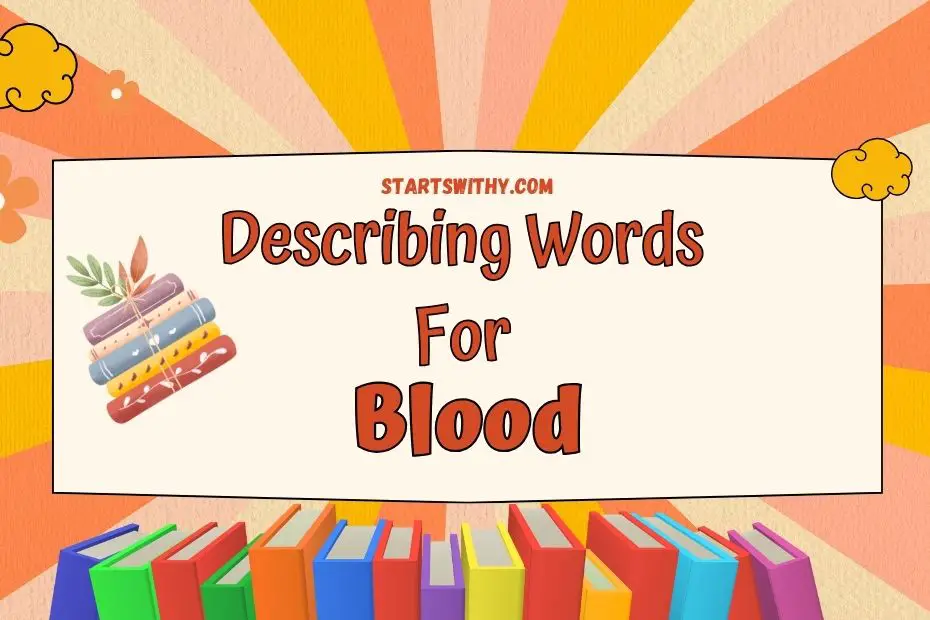Ever stumbled upon the term “French cuisine” and wondered why it’s not just “France cuisine”? That’s the magic of proper adjectives at work! These linguistic gems transform nouns from geographical locations into adjectives that describe something related to that place.
I’ll guide you through the intriguing world of proper adjectives, showing you how they’re derived from the names of countries, cities, and other places. Whether you’re writing a travel blog or penning a novel, mastering proper adjectives can take your content from good to great.
What are Proper Adjectives?
When I explain proper adjectives to preschool and kindergarten teachers, I make sure to keep the information clear and concise. Proper adjectives are a unique type of word that emerges from specific nouns—usually from the names of places such as countries or cities—and they serve a special role in language. These words help us describe things or people by connecting them to the locale they’re associated with.
For instance, if I’m telling a story about a little girl from Japan, I might describe her doll as a “Japanese doll”. This signifies not just any doll, but one that comes with the cultural context of Japan. It tells you something about the doll’s style, design, or origin without needing a lengthy description. Similarly, if I talk about the “French cuisine” my friend prepares, I’m indicating a particular style of cooking tied to France.
Proper adjectives, therefore, carry a touch of the character and essence of their origins. It’s not just food; it’s “Mexican food,” hinting at a palette of flavors specific to Mexico. When early educators introduce these words to children, it helps widen the little ones’ understanding of the vast world around them, one adjective at a time.
While proper adjectives are derived directly from place names, there’s a little twist to their form. They usually begin with a capital letter to reflect their proper noun heritage, a handy tip I always pass on. So when you transform “Canada” into “Canadian,” you maintain the capital “C” as a nod to its origins.
Diving into the pool of proper adjectives can be a language adventure. It’s essential to recognize that while proper adjectives often maintain the name’s essence, some can be tricky and don’t always look like their root word. “Spain” becomes “Spanish,” not “Spainish,” and “Greece” turns into “Greek,” not “Greecean.” This is the kind of detail that delights young minds, and I’ve found it can spark curiosity about language and culture in a classroom setting.
Teachers preparing lesson plans on this topic can build a bridge to global awareness for their students by starting with proper adjectives. By doing so, they impart knowledge that is not just grammatically correct but culturally enriching.
How are Proper Adjectives Formed from Geographical Locations?
Transforming geographical names into proper adjectives is like a linguistic adventure. I always find a thrill in this subtle art of modification. It’s about adhering to a pattern, a rhythm that language naturally dictates. Let’s delve into the mechanics of this process.
When I talk about proper adjectives that hail from geographical locations, what comes to mind are words like “Asian,” “American,” or “Australian.” These adjectives, at their core, start life as proper nouns—names given to specific places, be they continents, countries, cities, or landmarks. It’s from these nouns that they derive their descriptive power.
The journey from noun to adjective often involves a few steps. Typically, there’s the addition of a suffix. As I’ve observed, these suffixes can vary, but common ones include -an, -ian, -ese, -ish, and -ic. Think about how “Japan” evolves into “Japanese” or “China” into “Chinese.” The transformation is clear-cut and follows a recognizable pattern.
| Suffix | Example Proper Noun | Proper Adjective |
|---|---|---|
| -an | America | American |
| -ian | Russia | Russian |
| -ese | Lebanon | Lebanese |
| -ish | Spain | Spanish |
| -ic | Greenland | Greenlandic |
However, there are exceptions. In my experience, language is never without its quirks. Some geographical names change form more drastically when they become adjectives. For instance, “Greece” becomes “Greek,” and “Philippines” turns into “Filipino.”
These proper adjectives offer much more than mere grammatical correctness. They act as cultural ambassadors on behalf of their places of origin. By introducing them to children, I provide a window into diverse lands and societies.
I encourage preschool and kindergarten teachers to immerse their pupils in the delightful world of proper adjectives. With examples in hand, we can help little learners visually and audibly connect places with people, traditions, and objects. It’s also important to note that some place names are tricky, and their adjectival forms can be irregular or less intuitive. It’s my job to clarify these irregularities and to provide a logical explanation that teachers can pass on to their students.
Examples of Proper Adjectives from Countries
When exploring the world of proper adjectives, I find it truly fascinating to see how each country lends its name to an adjective that often captures the essence of what it represents. Proper adjectives from countries are incredible linguistic tools that allow us to paint vivid pictures with just a few syllables.
Mexico becomes Mexican, infusing the vibrant culture and colorful festivities into objects and people associated with it. Japan transforms into Japanese, instantly conjuring images of delicate cherry blossoms and meticulous art forms in the listener’s mind. Then there’s Canadian, derived from Canada, which might bring to mind vast wilderness, friendly faces, and hockey games.
Let’s consider France and Brazil. French isn’t just a language; it’s a proper adjective that entices thoughts of haute cuisine, fashion, and the romantic streets of Paris. Brazilian, on the other hand, often recalls rhythmic sambas, the sprawling Amazon, and the festive spirit of Carnival.
Here’s a breakdown of a few examples:
| Country | Proper Adjective |
|---|---|
| Egypt | Egyptian |
| Argentina | Argentinean |
| China | Chinese |
| Australia | Australian |
| Kenya | Kenyan |
As a teacher, it’s invaluable to highlight these proper adjectives to young learners. By introducing the adjectives related to different countries, I can also incorporate basic geography lessons that are both fun and educational. I enjoy watching as children’s eyes light up with recognition when “Italian” is associated with pizza or when “Russian” is linked to the grandeur of the Red Square.
Teaching these proper adjectives goes beyond mere grammar; it’s about connecting with a culturally rich and diverse world. For preschool and kindergarten students, it’s the early steps towards understanding a global community. Simple exercises like matching the proper adjective to its country, using adjectives in sentences, or pinpointing countries on a map can solidify their grasp on the concept.
Amidst these lessons, I’m reminded that language is a bridge between cultures and continents, and proper adjectives are like the colorful flags that adorn this bridge, making the journey across it a captivating experience for every young explorer.
Examples of Proper Adjectives from Cities
When I introduce proper adjectives derived from cities to preschoolers, I begin by creating a link between the city and something familiar to them. Take Parisian for instance. This adjective comes from Paris, a city known for the Eiffel Tower, which many kids recognize from pictures or cartoons. To illustrate this, I’d show an image of the Eiffel Tower and explain that anything related to Paris can be described as Parisian. This method helps to anchor the new word in their minds through visual association.
Here’s a brief table of examples I use in my lessons:
| City | Proper Adjective | Familiar Reference |
|---|---|---|
| New York | New Yorker | Statue of Liberty |
| London | Londoner | Big Ben |
| Tokyo | Tokyoite | Cherry Blossoms |
| Los Angeles | Angeleno | Hollywood Sign |
| Berlin | Berliner | Brandenburg Gate |
Incorporating a mix of auditory and visual learning strategies, I also introduce fun facts about each city along with its proper adjective. For instance, did you know that Venice has waterways instead of streets and therefore, anything from that city is referred to as Venetian? Sharing such intriguing details stimulates the children’s curiosity about the world.
Pairing storybooks that feature these cities can further enrich vocabulary understanding in a meaningful context. Reading about a young Madridian character exploring the streets of Madrid can bring the adjective to life for the little ones. This approach not only bolsters their language skills but also nurtures a sense of global awareness from an early age.
As I weave these stories and facts into our classroom discussions, the kids begin to naturally pick up on the pattern that these terms aren’t just words; they’re identifiers of culture and place. Through these lessons, proper adjectives become more than just vocabulary—they’re a passport to a broader, diverse world of learning.
Using Proper Adjectives in Writing
Introducing proper adjectives into the vibrant world of preschool education requires an approach that goes beyond simple memorization. Narrative techniques play a crucial role in this. When I craft stories for my class, I ensure that characters hail from different cities and countries, allowing me to weave proper adjectives seamlessly into the narrative. A character might be a proud Parisian baker or a clever Canadian detective. This way, the contextual learning helps children grasp the concept effortlessly.
Language arts activities are another avenue I explore. By encouraging children to write short, creative sentences using proper adjectives, I’m not just enhancing their grammar skills, I’m also boosting their creativity. For example, I might ask them to describe what a meal would look like if it was made by a ‘Mexican’ chef or the scenery when looking out of a ‘Venetian’ window. These exercises stimulate their imagination and solidify their understanding of how these adjectives provide flavor and color to language.
Real-life applications are also integral. For instance, during snack time, I introduce foods associated with certain places: ‘Belgian’ waffles, ‘Italian’ gelato, or ‘Viennese’ sausages. As children enjoy the treats, I connect the taste with the proper adjective, highlighting the food’s geographical origin. It’s a sensory experience that supports the language learning process.
Role-play is another impactful tool. Children adore dressing up and acting out scenarios. By assigning roles like a ‘Brazilian’ carnival dancer or a ‘Russian’ astronaut, I reinforce the use of proper adjectives in a fun, interactive manner.
Finally, peer collaboration can’t be overlooked. Group projects that involve creating posters about different countries encourage the use of proper adjectives to describe each nation’s culture, landmarks, or national animals. Team-based learning ensures that every child is engaged and actively involved in the discussion, deepening their comprehension through shared experiences.
By integrating proper adjectives into various aspects of learning, they become more than grammatical constructs; they evolve into tools that help children articulate the world around them and develop an appreciation for its diversity. It’s these everyday encounters with language that truly anchor these terms in the young minds, making the journey of education both informative and delightful.
Conclusion
Harnessing the power of proper adjectives derived from geographical locations does more than expand a child’s vocabulary. It opens up a world of expression and cultural awareness that’s crucial in today’s interconnected society. I’ve shared a wealth of strategies to weave these adjectives into preschool education effectively and engagingly. Remember, the goal is to make learning these descriptors natural and fun. As children grow, their ability to describe the world with precision and color will serve them well, both in academic pursuits and in the rich tapestry of life’s experiences. Let’s equip our young learners with the linguistic tools they need to thrive in a world that’s as vast as it is varied.



